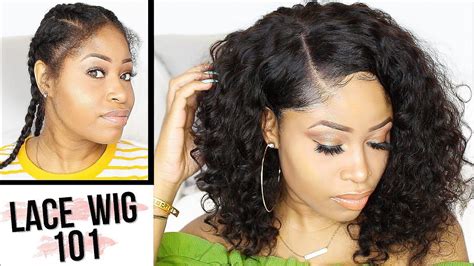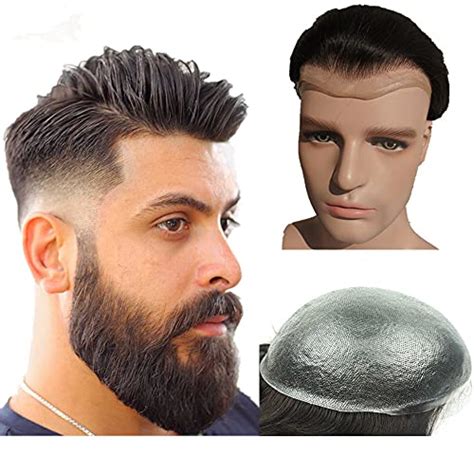Table of Contents
– Introduction
– Understanding Male Hair Loss
– Types of Men’s Hair Systems
– Benefits and Limitations of Hair Systems
– Choosing the Right Hair System
– Maintenance and Care of Hair Systems
– Styling and Customization Options
– Industry Trends and Innovations
– Future of Men’s Hair Systems
– Conclusion

Introduction
The global men’s hair system industry has witnessed a surge in popularity in recent years, driven by a growing demand for non-surgical hair restoration solutions. According to a study by MarketWatch, the industry is projected to reach $10 billion by 2023. This article delves into the multifaceted world of men’s hair systems, exploring their various types, benefits, limitations, and the latest innovations shaping the industry.
Understanding Male Hair Loss
Male hair loss, also known as androgenetic alopecia, affects over 50% of men over the age of 50. It is primarily caused by a combination of genetic predisposition and hormonal factors. Male hair loss typically follows a specific pattern, beginning with a receding hairline and thinning crown. As the condition progresses, it can lead to significant hair loss or baldness.
Types of Men’s Hair Systems
Men’s hair systems come in two main categories:
- Non-Surgical Hair Systems: These systems are non-permanent and can be attached and removed as desired. They include:
- Lace Frontals
- Toupees
- Hair Extensions
- Surgical Hair Systems: These systems involve surgical implantation of hair follicles into the scalp. They include:
- Follicular Unit Transplantation (FUT)
- Follicular Unit Extraction (FUE)
Benefits and Limitations of Hair Systems
Benefits:
- Non-surgical systems offer immediate results and are easily removable.
- Surgical systems provide permanent hair restoration with natural-looking results.
- Both types boost self-confidence and improve self-image.
Limitations:
- Non-surgical systems require daily maintenance and removal for cleaning.
- Surgical systems involve a surgical procedure with potential risks and costs.
- Both types may not be suitable for all levels of hair loss.
Choosing the Right Hair System
Selecting the right hair system depends on factors such as the extent of hair loss, budget, lifestyle, and desired results. Professional consultation from a qualified hair loss specialist is recommended to determine the most suitable option.
Maintenance and Care of Hair Systems
Non-Surgical Systems:
- Remove daily for cleaning with mild shampoo and conditioner.
- Use a tape or adhesive to attach them securely.
- Avoid excessive heat or chemicals that can damage them.
Surgical Systems:
- Requires regular check-ups with a hair surgeon.
- Avoid excessive force or pulling on transplanted hair.
- Follow a healthy diet and lifestyle to support hair growth.
Styling and Customization Options
Hair systems offer versatile styling options. They can be cut, colored, and styled like natural hair. Some techniques include:
- Blending: Mixing the hair system with existing hair for a seamless transition.
- Hairline Design: Creating a natural-looking hairline to enhance the overall result.
- Color Matching: Selecting hair that matches the natural color of existing hair.
Industry Trends and Innovations
The hair system industry is constantly evolving with new advancements such as:
- Minimally Invasive Surgical Techniques: Less scarring and faster recovery times.
- High-Density Wigs: Increased hair density for a more natural appearance.
- Custom-Made Systems: Tailored to individual head shapes and hair patterns.
Future of Men’s Hair Systems
The future of men’s hair systems promises further advancements, including:
- Bioengineered Hair: Using stem cells to create new hair follicles for transplantation.
- Artificial Intelligence: Analyzing hair patterns and customizing systems to achieve optimal results.
- Personalized Hair Restoration: Targeted treatments tailored to specific hair loss profiles.
Conclusion
Men’s hair systems offer a range of non-surgical and surgical solutions for hair restoration, allowing men to regain their confidence and improve their self-image. With careful consideration, maintenance, and access to the latest innovations, individuals can achieve natural-looking and long-lasting hair restoration results.
Additional Resources
– American Hair Loss Association
– International Society of Hair Restoration Surgery
– The Bald Truth About Hair Loss
Useful Tables
| Hair System Type | Method | Permanence | Maintenance |
|---|---|---|---|
| Lace Frontal | Non-surgical | Temporary | Daily removal for cleaning |
| Toupee | Non-surgical | Temporary | Daily removal for cleaning |
| Hair Extensions | Non-surgical | Temporary | Weekly or monthly maintenance |
| FUT | Surgical | Permanent | Regular check-ups with a surgeon |
| FUE | Surgical | Permanent | Regular check-ups with a surgeon |
| Factors Influencing Hair System Selection |
|—|—|
| Extent of Hair Loss |
| Budget |
| Lifestyle |
| Desired Results |
| Maintenance and Care Tips for Non-Surgical Hair Systems |
|—|—|
| Clean Daily with Mild Shampoo and Conditioner |
| Avoid Excessive Heat or Chemicals |
| Use Tape or Adhesive for Secure Attachment |
| Maintenance and Care Tips for Surgical Hair Systems |
|—|—|
| Regular Check-ups with a Hair Surgeon |
| Avoid Excessive Force on Transplanted Hair |
| Follow a Healthy Lifestyle to Support Hair Growth |
